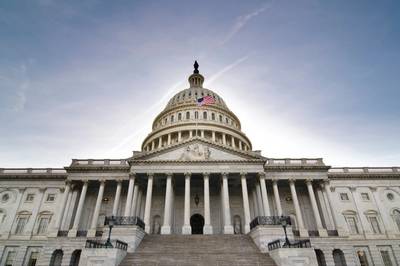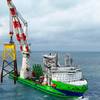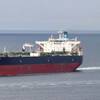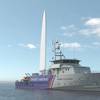Ask What Your Government Can Do For Your Industry (A 2023 Retrospective)
John F. Kennedy’s famous locution, “Ask not what your country can do for you, but you can do for your country” remains the rallying call for civic action and public leadership. The message remains foundational to the success of the United States, particularly as we head into an election year that once again appears to be filled with divisiveness and vitriol. That said, before we flip the calendar, it is important to set JFK’s message aside for a moment and reflect upon what our political leadership in Washington, DC did (or did not) accomplish for the maritime industry in 2023.
A year of internal focus and frustration
To put the legislative and regulatory year in its appropriate context, one must first examine the large political climate that permeated throughout 2023. The year had an inauspicious beginning, with Rep. Kevin McCarthy (R-Calif.-20) requiring 15 ballots over the course of four days to become Speaker of the House, representing the longest House Speaker election since 1860. Ultimately, the questions regarding Rep. McCarthy’s conservative credentials never dissipated, reaching fever pitch following the last-minute passage of a bipartisan Continuing Resolution in September to avert a shutdown, leading to a successful motion to vacate his speakership on October 3. Following 21 days of disorder – the longest period without a Speaker since 1962 – Rep. Mike Johnson (R-La.-4) was finally elected Speaker on October 24.
This protracted absence of House leadership inevitably impacted the ability of Congress to make substantive changes to support the U.S. maritime industry. Indeed, at the time of writing in mid-November, many of the most critical pieces of legislation impacting the maritime industry remain in limbo. For example, while the House and Senate both passed their separate versions of the National Defense Authorization Act (NDAA) for Fiscal Year 2024 in July, the two sides continue to resolve differences between the two bills, which also face numerous challenges over funding authorizations for international allies.
In addition, while the NDAA often acts a vehicle for moving legislation impactful to the maritime industry, the slimmed-down NDAA passed by both chambers this year lacks such provisions. For example, the NDAA does not contain an authorization for the U.S. Coast Guard, which remains a separate stand-alone bill that has not been passed by the House (notwithstanding that the bill was reported out by the House Committee on Transportation and Infrastructure in June). It also remains unclear whether Congress will even pass an authorization bill for the Maritime Administration (MARAD) or Federal Maritime Commission (FMC) for this fiscal year.
The fate of numerous other bills that could impact the U.S. maritime industry also remains unclear. For example, Rep. John Garamendi (D-Calif.-8) has introduced various bipartisan bills that seek to build upon the Ocean Shipping Reform Act of 2022 (OSRA 2022), which is yet to be fully implemented through regulation by the FMC (discussed below). Similarly, Rep. Garamendi recently reintroduced his legislation – the Close Agency Loopholes to the Jones Act – that seeks to address many areas that have been carved out of the Jones Act’s reach through U.S. Customs and Border Protection rulings. The legislation would be particularly impactful on the U.S. offshore market, clarifying that U.S.-flag coastwise-qualified vessels must be used to transport merchandise from a U.S. point to the “pristine seabed” as well as to require the use of such vessels for offshore platform decommissioning on the U.S. Outer Continental Shelf.
Regulatory action underway
While Congress got off to an abysmal start in 2023 (and went downhill from there), the Executive Branch was extremely active on the regulatory side to begin the year. For example, MARAD published both its interim final rule and solicitation for applications for the Tanker Security Program (TSP) in December 2022. Following an extension of the initial application period in February 2023, and the re-solicitation for one TSP Operating Agreement in July, MARAD announced that the TSP was fully subscribed in October 2023. It also announced the award of the two Maritime Security Program Operating Agreements, which were vacated by OSG when the Overseas Santorini and Overseas Mykonos were awarded TSP Operating Agreements. In aggregate, once all reflaggings are completed, MARAD’s actions in 2023 will have grown the U.S.-flag fleet in international trade by 10 vessels.
Similarly, the FMC got off to a blazing start, initiating its various rulemakings mandated by OSRA 2022 in late calendar year 2022, with significant substantive work extending into 2023. In June 2023, the FMC issued a supplemental notice of proposed rulemaking on the definition of unreasonable refusal to deal or negotiate with respect to vessel space accommodations provided by an ocean common carrier. A final rule remains pending. Similarly, the FMC received numerous comments from every part of the maritime supply chain on its proposed rule regarding demurrage and detention billing requirements. The FMC continues to work to address those comments, marching towards further regulatory action.
Initial work is also underway to develop a new National Maritime Strategy. The NDAA for Fiscal Year 2023, directed MARAD to contract with a s federally funded research and development center to identify the key elements needed for a national maritime strategy. The strategy, as envisioned by Congress, should be designed to achieve the objectives of the Merchant Marine Act of 1936, 46 U.S.C. § 50101, to ensure a robust U.S.-flag merchant fleet, mariner workforce, and shipbuilding industry to meet future economic and national security emergencies. We are a long way from having a National Maritime Strategy in hand, but in September 2023, MARAD selected the Center for Naval Analyses to begin the work mandated by last year’s NDAA.
Some port funding and much more to come
In November 2023, MARAD announced the award of $653 million in grant funding to 41 port improvement projects under the Port Infrastructure Development Program (PIDP). The projects were varied in nature and location, spanning the Atlantic, Pacific, and Gulf Coasts, as well as the Great Lakes and inland waterways. More is to come as the Bipartisan Infrastructure Law appropriated a total of $2.25 billion in PIDP funding, stretching out through Fiscal Year 2026. Rumors abound of a forthcoming two-year Notice of Funding Opportunity (NOFO), which could provide up to $950 million in funding in 2024.
MARAD is not the only agency looking to build upon its momentum in 2023 to fund port projects over the next year. The Inflation Reduction Act of 2022 provided the Environmental Protection Agency (EPA) with $3 billion to fund zero-emission port equipment and technology and to help ports develop climate action plans to reduce air pollutants. EPA released both a general and technical request for information for public comment throughout 2023, and held a “first look” program webinar in late October. The industry anxiously awaits a forthcoming NOFO to make the $3 billion in funds available.
However, notwithstanding these grant programs, achieving the Inflation Reduction Act’s ambitious air emission reduction goals at U.S. ports will also require the outlay of billions of dollars of private capital to purchase new near-zero cargo handling equipment. To stimulate this investment, Rep. Mike Ezell (R-Miss.-4) and Rep. Troy Carter (D-La.-2) introduced a bipartisan bill in July (H.R. 4993) to expand the Capital Construction Fund (CCF) to allow for the purchase of cargo handling equipment by marine terminal operators with CCF deposits. The bill appears to be gaining momentum, with numerous cosponsors added in October and November. When coupled with PIDP and Clean Port Act funding anticipated in 2024, the changes to the CCF could result in a historic recapitalization of cleaner and safer cargo handling equipment and U.S. port infrastructure.
In other words, while 2023 could have been more impactful for the U.S. maritime community, and 2024 unfortunately may bring greater political division, the last year built a foundation for numerous positive federal investments that maritime stakeholders should focus upon to get through another challenging election year.















